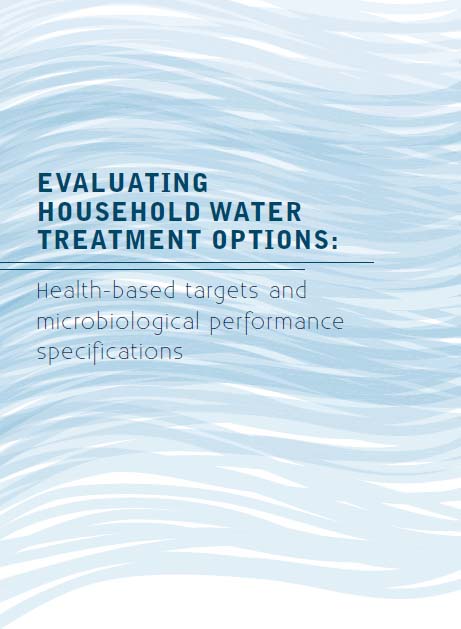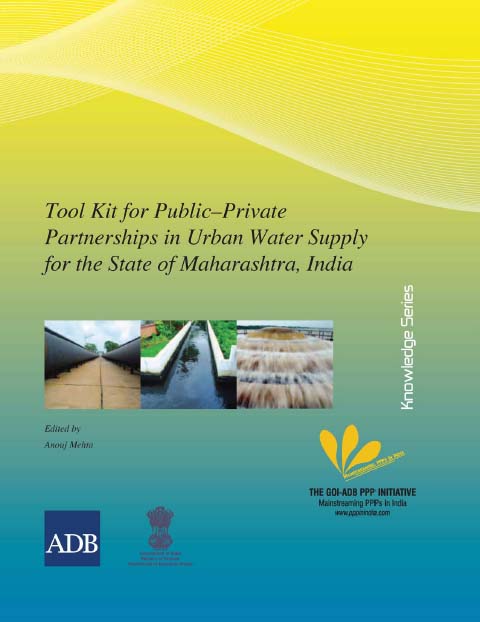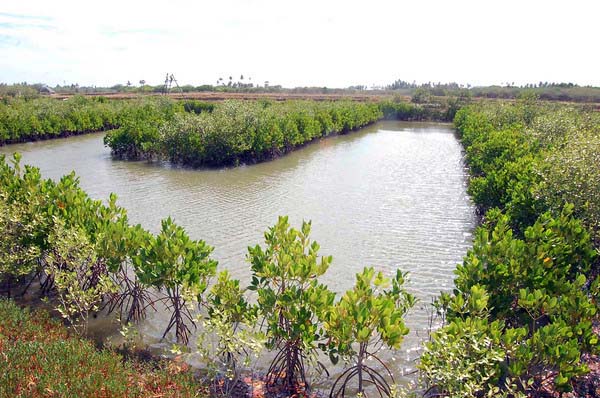/regions/political
Political
Evaluating household water treatment options
Posted on 17 Jul, 2011 02:11 PM This document by the World Health Organisation, for the first time, sets forth global criteria to evaluate whether a household water treatment option reduces waterborne pathogens sufficiently to protect health. Through use of a risk-based framework and by emphasizing the philosophy of incremental improvement, it is intended to provide implementers and policy-makers with an evidence-based and pragmatic approach to select options suited to local conditions.
This document by the World Health Organisation, for the first time, sets forth global criteria to evaluate whether a household water treatment option reduces waterborne pathogens sufficiently to protect health. Through use of a risk-based framework and by emphasizing the philosophy of incremental improvement, it is intended to provide implementers and policy-makers with an evidence-based and pragmatic approach to select options suited to local conditions.
Household water treatment interventions may play an important role in protecting public health where existing water sources, including those delivered via a piped network or other improved sources, are untreated, are not treated properly or become contaminated during distribution or storage. Household water treatment applications are a range of technologies, devices or methods employed for the purposes of treating water at the household level or at the point of use in other settings, such as schools, health-care facilities and other community locations. Point-of-use water treatment is another term used for household water treatment.
Geomorphic study for regeneration of aquatic ecosystem in Bareilly – An article in Geospatial World
Posted on 17 Jul, 2011 10:53 AMIt indicates that the aquatic ecosystem of an area disappeared due to unplanned development of agro ecosystems and human settlements. This area was earlier covered with ponds, wetlands and ox-bow lakes. Now, during the rainy season, inhabitants of these wards face severe problem of water logging and pollution.
Bamboo charcoal as a natural Water Filter - An indigenous rural application
Posted on 16 Jul, 2011 07:24 PMGuest post: Shwetha Kamath (India Water Portal Volunteer)
About 74 per cent of India's total population, currently about 1.25 billion, live in rural areas. More than one third of the water available to them is not potable. In a grim reminder that poor quality of drinking water leads to serious health problems, India has admitted that about 180,000 rural populated areas are afflicted by diseases which are caused due to impure, toxic organic and inorganic substances including tri-halo methane, chlorine, etc. Some states have reported multiple contaminations in drinking water and there is no doubt that the current water situation in India will get much, much worse unless suitable solutions are sought. Most existing purification methods not only remove the impurities but drain out the essential minerals as well. Moreover, they are expensive and require extensive maintenance. Thus a natural filter comprising of bamboo, gravel, pebble and other locally available natural adsorbents is a great alternative to carry out water purification. What makes this filter unique is the use of bamboo charcoal which is not commonly used in any filter designed for domestic purposes.
Public-Private Partnerships in urban water supply for Maharashtra – Tool kit by GoI-ADB PPP Initiative
Posted on 16 Jul, 2011 06:48 PM
The various possible PPP structures for the sector were studied, and their applicability assessed in the context of the selected sample cities. Consultations led to development of term sheets for these PPP structures, which were identified as most suitable and feasible for implementation.
The above exercise has led to development of this report, which may be considered as a tool kit designed to help decision makers decide whether a particular project might be suitable for the PPP route or not. The tool kit can, therefore, be the basis for approving a project implementation structure as part of the overall project approval methodology.
Mangrove wetlands of Tamil Nadu, Andhra Pradesh and Orissa - Atlas by MSSRF
Posted on 16 Jul, 2011 04:00 PM
USAID India is looking for project management specialist (Environment) at New Delhi – Apply by July 18, 2011
Posted on 15 Jul, 2011 04:32 PMContent courtesy: DevNetJobsIndia
The U.S. Agency for International Development is headquartered in Washington, D.C. and has field offices in many of the countries where we have programs. United States Agency for International Development (USAID) India is located at the American Embassy, Chanakyapuri, New Delhi 110 021, India.
Job responsibilities:
The project management specialist (Environment) provides substantial assistance to overall planning and preparation of new programs and activities within the environment and forestry sectors for USAID/India. The specialist works closely with staff members of the GOI, Indian state governments, the U.S. government, international donors, and NGOs on USAID/India investments in these sectors.
DAS India is looking for environment specialists at Lucknow – Apply by August 5, 2011
Posted on 15 Jul, 2011 04:31 PMDAS India is an ISO 14001:2004 and NABET (under quality council of India QCI) certified consulting organization. For SDEM (Sustainable Development Environment Management) group, DAS India is interested in hiring 4 environment specialists fulfilling following criteria:
Job responsibilities:
- Develop competencies in above sectors to contribute to EIAs
- Assist in development of case specific TORs
- Co-ordinate and monitor environment parameter testing
Kalamandir-CCAF is looking for civil engineering-watershed at East Singhbhum, Jharkhand – Apply by July 20, 2011
Posted on 15 Jul, 2011 04:31 PMContent courtesy: DevNetJobsIndia
Kalamandir operates with a vision to foster necessity and accessibility of arts and aesthetics in our day to day social life. We are engaged in constantly supporting, nurturing and disseminating the finer aesthetic sense among individuals, communities, organization s and social groups.
Civil engineer (degree or diploma) with experience of working in watershed development programme of government of India may apply for the post of civil engineer-watershed.
Bharti Integrated Rural Development Society invites applications for various positions, Hyderabad – Apply by July 22, 2011
Posted on 15 Jul, 2011 04:31 PMContent courtesy: DevNetJobsIndia
Bharti Integrated Rural Development Society (BIRDS) is a non-profit organization established in 1991 at Nandyal, in Kurnool district of Andhara Pradesh, India. Founded and directed by Paul Raja Rao, BIRDS has grown in the past six years from a grassroots attempt to empower the Dalits and provide a few microfinance loans to groups of women.
Umeed is looking for team member (water project) at Bhopal – Apply by July 20, 2011
Posted on 15 Jul, 2011 04:30 PMContent courtesy: DevNetJobsIndia
Umeed is a non government organization registered on 1995 under the registration & society act , and working in Madhya Pradesh.
Job description:
- To build the project team , assisting and motivating through participative management to ensure effective service delivery to the target community
- To develop a weekly work plan as per the performance indicators for the field workers keeping in mind the quarterly requirements of the project
- To conduct weekly/monthly meetings with the team members
- To maintain key relationships of stakeholders